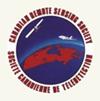结合空间-光谱薛定谔特征映射和多核学习的低样本高光谱图像分类
IF 2.1
4区 地球科学
Q3 REMOTE SENSING
引用次数: 2
摘要
高光谱图像的分类是遥感应用中最热门的领域之一。值得注意的是,光谱和空间特征在这一研究领域中起着至关重要的作用。本文提出了一种基于空间光谱薛定谔特征映射(SSSE)和多核学习(MKL)的高光谱图像分类方法,在训练样本数量较少的情况下,提高了高光谱图像的分类效率。在该方法中,首先将SSSE应用于谱域,提取原始图像的重要特征并进行降维;然后利用MKL增强特征学习过程,得到指定核的最优组合。最后,将最优核代入支持向量机算法进行分类。实验结果表明,该方法显著提高了分类精度,在训练样本较少的情况下也能提供高效的分类结果。此外,该方法的计算时间大大低于目前最先进的MKL方法。本文章由计算机程序翻译,如有差异,请以英文原文为准。
Combined Spatial-Spectral Schroedinger Eigenmaps with Multiple Kernel Learning for Hyperspectral Image Classification Using a Low Number of Training Samples
Abstract The classification of hyperspectral images is one of the most popular fields in remote sensing applications. It should be noted that spectral and spatial features have critical roles in this research area. This paper proposes a method based on spatial-spectral Schroedinger eigenmaps (SSSE) and multiple kernel learning (MKL) to classify hyperspectral images more efficiently while using a low number of training samples. In the proposed method, first SSSE is applied to spectral domain in order to extract significant features and reduce dimension of the original image. Then MKL is utilized to enhance the feature learning process and obtain an optimum combination of some specified kernels. Finally, the classification is carried out by substituting the optimal kernel in support vector machine (SVM) algorithm. Experimental results show that the proposed method improves classification accuracy significantly and provides highly efficient results in the case of a small number of training samples. Furthermore, the computation time of the proposed method is much lower than the state-of-the-art MKL methods.
求助全文
通过发布文献求助,成功后即可免费获取论文全文。
去求助
来源期刊

Canadian Journal of Remote Sensing
REMOTE SENSING-
自引率
3.80%
发文量
40
期刊介绍:
Canadian Journal of Remote Sensing / Journal canadien de télédétection is a publication of the Canadian Aeronautics and Space Institute (CASI) and the official journal of the Canadian Remote Sensing Society (CRSS-SCT).
Canadian Journal of Remote Sensing provides a forum for the publication of scientific research and review articles. The journal publishes topics including sensor and algorithm development, image processing techniques and advances focused on a wide range of remote sensing applications including, but not restricted to; forestry and agriculture, ecology, hydrology and water resources, oceans and ice, geology, urban, atmosphere, and environmental science. Articles can cover local to global scales and can be directly relevant to the Canadian, or equally important, the international community. The international editorial board provides expertise in a wide range of remote sensing theory and applications.
 求助内容:
求助内容: 应助结果提醒方式:
应助结果提醒方式:


